The War on White Australia: A Case Study in the Culture of Critique, Part 5 of 5
Jewish anti-White activism and Australia’s Aborigines
As in the United States, Australian Jews have formed strategic partnerships with various the non-White “victim” groups, who, like them, have been the alleged victims of White oppression and injustice. Prominent among these non-White groups is Australia’s indigenous people. One Jewish source describes Jews and Aborigines as “two peoples with histories of dispossession and humiliation and killing who recognise each other, who find points of intersection and of parallel.”
Seeing a parallel between the “Holocaust” and the White Australia’s treatment of Australia’s Aborigines, the Jewish Australian Professor Robert Manne has written that: “Although there was never a time when I was tempted by the thought that the Holocaust and the dispossession [of Australia’s Aborigines] were morally equivalent horrors – the British settlers did not intend to wipe out the Aborigines and would have been content if the Aborigines had uncomplainingly abandoned their way of life and their land – I have no doubt that in part I was drawn to this chapter of Australian history because of the role the Holocaust played in my thought.”[i] Thus, while careful not to detract from the metaphysical preeminence of the “Holocaust,” Manne has been particularly keen to make the plight of Australia’s Aborigines an important part of the anti-White narrative.
Disgraced former judge and prominent Jewish activist Marcus Einfeld has likewise noted parallels between the plight of Australia’s Aborigines and the “Holocaust,” claiming that “Just as Aboriginal dispossession and discrimination in Australia, often brutally carried out and enforced, have helped to fashion a new consciousness and pride in Aboriginality, the unique history of the Jewish people, and most recently the Holocaust experience, has played a pivotal role in the formation of the collective Jewish identity.”[ii] Australian Jewish leader and activist Mark Leibler claims to “have developed a deeper understanding of the connections between Indigenous and Jewish people and the underlying affinity we share. … We must listen to and respect the hard stories. Stories that are repeated all over Australia – stories of injustice, oppression and horror. Defiant stories of the proud survival of identifiable people. Stories resonating with familiar themes for each and every Jew.”[iii] Speaking on behalf of Australian Jews, Leibler claims that: “We’ve suffered 2,000 years of persecution and we understand what it is to be the underdog and to suffer from disadvantage.”
Academic and non-academic activist Jews have been leading proponents of the view that European settlement of Australia, and later government policies like allowing the removal of half-caste Aboriginal children from their families (generally to save the child from abusive or otherwise appalling conditions) amounted to acts of genocide. The late Jewish lawyer Ron Castan, who led the 1992 High Court challenge that resulted in the recognition of Aboriginal land rights, saw direct parallels between the supposed historical plight of Jews, and that of Australia’s indigenous people. He claimed that reading the work of left-wing “revisionist” historians like Professor Henry Reynolds had “opened my eyes, my mind and my heart to Australia’s own version of genocide.” Castan backed calls for the
appropriate recognition and representation at the Australian War Memorial of those heroes of Aboriginal Australia who died fighting for their lands. And just as there are Holocaust museums in Israel and Australia, so this country desperately needs its museum to the Stolen and Dispossessed – and proper memorials and remembrance ceremonies at every massacre site across the land. The refusal to apologise for dispossession, for massacres, and for the theft of children, is the Australian equivalent of the Holocaust deniers – those who say it never really happened.[iv]
Invoking the “full-court press” employed by Jewish activist organizations worldwide, Castan proposed that: “The answer to the Holocaust deniers and to those who use terms like ‘black armband’ is to write more books, give more talks, fight more native title cases in the courts, tell more stories of the stolen generation, teach more courses in schools and universities and build more monuments and statues of indigenous freedom fighters so that the cult of disremembering can never take hold again.”[v]
The attempt by Jewish activists to pin all of the blame for the social pathologies of Australia’s Aborigines on the evil legacy of European colonialism and “White racism” is anti-White hate propaganda pure and simple. Nobody disputes that the traditional hunter gatherer lifestyle of the Australian Aborigines was severely disrupted by the arrival of Europeans. There were around 300,000 Aborigines in Australia at the time of European colonization in 1788. Their numbers declined considerably in the decades that followed – mainly as a result of diseases contracted from Europeans for which they had no immunity. Aborigines were also killed by Whites in violent clashes on the frontier; however, such behavior was never sanctioned by the governing authorities, and White settlers were charged with murder and executed for killing Aborigines. The 1961 census reported that the Aboriginal population of Australia at around 106,000. This had increased to 171,000 by 1981, and (incredibly) to over 500,000 in the 2011 census. This figure has been inflated by those with tiny amounts of Aboriginal ancestry (or none) claiming to be Aboriginal to take advantage of a raft of generous indigenous welfare programs and career opportunities.
The real cause of the social pathology of Australia’s Aborigines
Notwithstanding the fact that European colonization had a range of very negative effects on Australia’s indigenous people, the real (though never acknowledged) source of the ongoing social dysfunctional of Aboriginal people is their extraordinarily low average intelligence. In his 1997 book Guns, Germs and Steel the Jewish anthropologist Jared Diamond, currently a professor of geography at UCLA, declared that the idea that there are genetic factors which cause Europeans to be more intelligent (on average) than Australian Aborigines is morally loathsome. In his Pulitzer Prize winning book, Diamond observed that
most laypeople would describe as the most salient feature of native Australian societies their seeming “backwardness.” Australia is the sole continent where, in modern times, all native peoples still lived without any of the hallmarks of so-called civilization – without farming, herding, metal, bows and arrows, substantial buildings, settled villages, writing, chiefdoms, or states. Instead, Australian Aborigines were nomadic or seminomadic hunter-gatherers, organized into bands, living in temporary shelters or huts, and still dependent on stone tools. During the last 13,000 years less cultural change has accumulated in Australia than in any other continent. The prevalent European view of Native Australians was already typified by the words of an early French explorer, who wrote, “They are the most miserable people in the world, and the human beings who approach closest to brute beasts.”
… When asked to account for the cultural “backwardness” of Aboriginal Australian society, many white Australians have a simple answer: supposed deficiencies in the Aborigines themselves. In facial structure and skin color, Aborigines certainly look different from Europeans, leading some late-19th century authors to consider them the missing link between apes and humans. How else can one account for the fact that white English colonists created a literate, food-producing, industrial democracy, within a few decades of colonizing a continent whose inhabitants after more than 40,000 years were still nonliterate hunter-gatherers. It is especially striking that Australia has some of the world’s richest reserves of copper, tin, lead, and zinc. Why, then, were Native Australians still ignorant of metal tools and living in the Stone Age? It seems like a perfectly controlled experiment in the evolution of human societies. The continent was the same; only the people were different. Ergo the explanation for the differences between Native Australian and European-Australian societies must lie in the different people composing them. The logic behind this racist conclusion appears compelling. We shall see, however, that it contains a simple error.[vi]
According to Diamond, this simple error consists in failing to take into account the differing environments of Aborigines and Europeans, and how these differing environments determined the divergent historical development of these groups. Totally ignoring the numerous studies showing very large differences in average IQ between Europeans and Aborigines, Diamond posits that Europeans only developed a more technologically advanced society than Aborigines because they were fortunate enough to be situated in a band of “lucky latitudes” running across Eurasia from the Mediterranean to the Yellow Sea that made the agricultural revolution possible. They were also fortunate to have many plants and animals suitable for domestication. The comparative backwardness of Aborigines in 1788 was entirely due the corresponding lack of these geographic factors. This, he claims, made it more difficult for them to develop agriculture, which, in turn, delayed their development of science and technology. According to Diamond, geography, not race, determined the contrasting fates of Europeans and Australia’s Aborigines.
The failure of Australia’s Aborigines to domesticate plants and animals is attributed by Diamond to “the lack of domesticable animals, the poverty of domesticable plants, and the difficult soils and climate.”[vii] Yet Diamond confirms that yams, taro, and arrowroot grow wild in northern Australia and could have been cultivated along with two native grasses which could have been bred to produce cereals. Richard Lynn notes that Diamond fails to acknowledge that Australia’s climate is very varied and that “apart from the deserts of the central region is potentially suitable for the agriculture that was developed during the nineteenth and twentieth centuries by Europeans.”[viii]
The real reason why the Aborigines continued to live as hunter-gatherers right up to the time of European contact (and after) is most likely that the evolution of sufficiently high intelligence was an essential preliminary for the independent invention of agriculture, with an average IQ of about 80 necessary for this to occur. Lynn notes that the transition to agricultural societies was not possible until people evolved sufficient intelligence to take advantage of wild grasses, and that it was only after the last glaciation that they were cognitively fit to do this. Evolutionary psychologist J. Philippe Rushton points out that: “Lynn’s view provides an explanation for why these advances were never made by Negroids or those southeast Asian populations who escaped the rigors of the last glaciation.”[ix] Michael Hart makes the points that “The idea of planting crops, protecting them, and eventually harvesting them is not obvious or trivial, and it requires a considerable degree of intelligence to conceive of that notion. No apes ever conceived of that idea, nor did Australopithecus, Homo habilis, Homo erectus, nor even archaic Homo sapiens. It seems unlikely that such a notion could be originated by a group of humans with an IQ of about 70.”[x]
According to psychologist Richard Lynn, the first attempt to estimate the intelligence of the Australian Aborigines was made by Francis Galton in 1869. On the basis of descriptions of their accomplishments, he estimated that their intelligence was approximately three “grades” below that of the English. Lynn explains that “In Galton’s metric, a grade was equivalent to 10.4 IQ points. Hence in terms of the IQ scale, he estimated the Australian Aborigine IQ at 68.8. Seventeen studies of the intelligence of Australian Aborigines assessed by intelligence tests have shown that this was a fairly accurate assessment. … The median IQ of the seventeen studies is 62 and represents the best estimate of the average intelligence of Australia’s Aborigines”[xi] In 1929 the eminent Australian anthropologist A.P. Elkin had observed that “some races possess certain powers in greater degree … than do others. Thus the Australian Aborigines and the African Negroes are human and have powers but they are not necessarily equal to the white or yellow races.”[xii]
The findings from studies into Aboriginal IQ have been corroborated by a study showing Aborigines have slower reaction times (reaction time being significantly correlated with IQ), and seven studies showing that the average brain size of Aborigines is significantly smaller that Europeans (brain size being correlated with IQ at approximately 0.4). The most authoritative study of Aboriginal brain size is that of Smith and Beals (1990) which gave a brain size difference between Aboriginal and Whites of 144cc. or about 10 per cent. Four studies put the average IQ of Aboriginal-European hybrids at 78 — about midway between the IQs of Aborigines and Europeans. The low intelligence of the Aborigines is also corroborated by their very low levels of educational attainment. Lynn notes that “Aborigines do poorly in education, consistently with their low intelligence, showing that their low cognitive abilities are not confined to their performance on intelligence tests.”[xiii] As of 1976 no Aborigine had ever obtained a Ph.D. Citing psychological studies showing that Aboriginal Australians had a much stronger self-concept (self-esteem) than Europeans, Lynn makes the point that “These are remarkable results considering the low levels of achievement of Aborigines in school and employment. Similar results however have been found for African-Americans in the United States, and Africans in Britain.”[xiv]
A 2010 report on Aboriginal school performance found that indigenous students in year 9 achieved similar scores last year to non-indigenous students in year 3. … Of the indigenous students who sat the tests , 40 per cent – 60,000 students – failed to meet national minimum standards, a proportion mirroring the 40 per cent of indigenous families who were welfare-dependent. [Substantial percentages [18-30%, in different states] do not take the test and may be presumed to be likely to not meet minimum standards.) ”Every state and territory has a problem, in every year, in every subject,” the report said. (Indigenous students are six years behind in literacy and numeracy, report says)
Australian Aborigines have much higher rates of crime than Europeans. Studies show that they are 10 times more likely to commit homicide than Europeans, and are 10 to 15 times more likely to commit a serious assault. Aborigines are, consequently, vastly overrepresented in Australia’s prison population. It is common to blame White Australia for this dismal state of affairs. Lynn cites an Australian sociologist who argues that “the key general cause of the perceived criminalisation of Aborigines is universally perceived to be socioeconomic deprivation and consequential exclusion” and that “the underlying issues of unemployment, poverty, ill-health, dispossession, and disenfranchisement are the causes of the over-involvement of Aborigines in prison,” and these are themselves “the product of indirect discrimination.” Lynn notes wryly that “Thus it is the Europeans who are responsible for the high crime rates of the Aborigines.”[xv]
The reality is that a population with a mean IQ of only 62 is congenitally incapable of functioning effectively in a modern technological society like Australia. The observations of the German sociologist Hans Schneider, who studied Aboriginal communities in 1986, retain their relevance today. While the Europeans had built houses for the Aborigines,
the Aborigines do not accept these houses with the result that they are usually unoccupied. Many of them have been deserted, vandalized, or even destroyed. In order to prevent Aborigines destroying their houses, these are now prefabricated out of steel-plated units. Most of the inhabitants live in self-constructed shacks made from branches or sheets of corrugated iron, erected outside of and around the settlement. They have not accustomed themselves to garbage disposal with the result that the surrounding bush land is littered with old cans, bottles, tires, transistor radios, and batteries. Rusty car bodies and unauthorized garbage dumps can be seen everywhere. … The health, education and living standards are well below the Australian average. Almost all the inhabitants are unemployed and fully dependent on social security. They just sit around in a state of boredom and hopelessness. They do not send their children to school. The Aborigines have no problem operating machines or driving cars and tractors, but they have not learned how to service and repair them. Faulty machinery is simply left where it breaks down and transistor radios are thrown away when the batteries are flat. Under the supervision of whites they are able to establish a plantation or cattle station and will work there, but as soon as this supervision and instruction is withdrawn the project collapses.[xvi]
One Australian demographer has observed that “In every conceivable comparison the Aborigines stand in stark contrast to the general Australian population. They have the highest growth rate, the highest birth rate, the highest death rate, the worst health and housing, and the lowest educational, occupational, economic, social, and legal status of any identifiable section of the Australian population.”[xvii] To ascribe this situation exclusively to the legacy of European colonization and the evils of “White racism” in Australia is nonsense. Non-White migrants like the Chinese have somehow managed to overcome this supposedly intractable racism to outperform White Australians in a range of social indicators. Lynn points out that
the Australian Aborigines are a racial underclass with the same characteristics of the black underclass of the United States, Britain, and Brazil, but they are an even more serious social problem. They have much lower intelligence with an average IQ of 62, as compared with approximately 85 for Blacks in the United States and Britain, and they have worse rates of educational attainment, unemployment, crime, teenage motherhood, welfare dependency, alcoholism, and the other social pathologies of the underclass. In addition they have high fertility that is about double that of Europeans, and although this is to some degree offset by their high mortality, their numbers are growing to the extent that they are approximately doubling every generation.
There can be little doubt that the syndrome of social pathologies of the Australian Aborigines has a genetic basis. Their shorter gestation times and typically small brain size that underlies their low intelligence, poor educational attainment, and low socioeconomic status cannot be explained by environmental deprivation or European racism. None of this is recognized or at least articulated by any of the Australian social scientists. … None of them even make any mention of the contribution of low intelligence and high psychopathic personality to the social pathology of the Australian underclass.[xviii]
Telling “noble lies” for the anti-White cause
Jewish activists and their ideological allies in Australian academia are content to disregard these inconvenient facts which totally undermine the anti-White narrative they have assiduously constructed. They let the truth be damned and instead seek to propagate “noble lies” intended to make Aborigines feel good by making their culture appear equal or superior to that of Europeans. This tactic is motivated by the Marxist-Leninist principle that the end justifies the means. As the goal of ending the White racial and cultural domination in Australia is held to be worthy, presenting false accounts as authentic history, anthropology, or sociology is believed to be justified. Consistent with the postmodernist argument that truth is only true when it benefits non-White minority groups, false accounts are not false if they contribute to the anti-White narrative and nurture White guilt. The scale of the White guilt, shame and pathological altruism this brand of anti-White activism has successfully engendered is reflected in the exponential growth in indigenous welfare schemes of every description. Decades of these programs have, however, done practically nothing to alleviate the social pathology of Australia’s Aborigines.
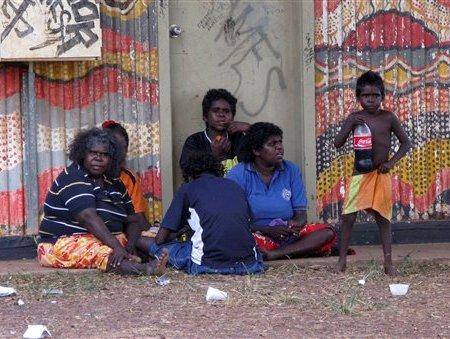
The social pathology of Australia’s Aborigines persists despite decades of expensive government programs
At the forefront of those propagating “noble lies” has been the leading “revisionist” historian Professor Henry Reynolds. In his book Why Weren’t We Told? Reynolds recounts his encounter with an “old ethnographer” in the 1960s who had told him “There could never be racial equality because Aborigines had much smaller brains than did Europeans. They were biologically incapable of emulating the white race.” Another man had told him that “although Africans had a brain cavity which was 15 cubic centimetres smaller than the average white man’s, they were intellectually ‘far above the Australian full-blood Aboriginal,’ who was quite unable to cope in competition to the white man and never could become an equal citizen of the country.”[xix] According to Reynolds, these were “men of their time. They had grown up when few people had questioned the primacy of race. What was disturbing was that many younger people agreed with their views.”
They had been brought up to believe that race was a fixed biological category, that Europeans and Aborigines were separated by unchangeable physical and cultural characteristics and that Aborigines were Stone Age people who had not advanced as Europeans had along the ascending path of cultural and social progress. Such ideas had pervaded Australian life until the 1940s and 1950s and many people continued to cling to them through their life and would no doubt take them to the grave. While views of this kind could easily be labelled racist, that categorisation did not on its own provide an understanding of the problem. They did not necessarily lead people to act or speak with hostility towards indigenous people. Indeed, they often coexisted with sympathetic interest and a desire to lend a helping hand.[xx]
So what specific evidence does Reynolds present to refute the assertions of these supposedly wrongheaded “racists”? He offers none. Like other historians and commentators of his political ilk, Reynolds seems to think that solemn expressions of disapproval at these statements are sufficient to establish their falsity. Reynolds acknowledges the real, totally unscientific, Jewish ethno-political origins of his belief in biological racial equality when he writes that “My students often ask me how it was that people in the past held such objectionable views. They have no understanding of just how pervasive racial thought was a generation or two ago, how the Second World War and the Holocaust marked an intellectual watershed after which nothing would be the same again.”[xxi]
It is now commonplace to portray pre-European Australia as having been a virtual Garden of Eden until the evil White man came from Europe and ruined it all. Aboriginal culture is now regarded as “sacred” and off-limits to criticism in the public square. Aboriginal people and culture are never to be criticized no matter how dysfunctional or barbaric some of their practices might be or have been. Mention of the incessant tribal warfare, cannibalism, infanticide, and endemic sexual violence against women and children have been effaced from contemporary accounts of Aboriginal society and culture. These have been replaced with flattering (but utterly false) notions of how “sophisticated” Aboriginal society and culture really was (and still is) if only the insensitive and racist Whites had the gumption to recognize it. These lies are reminiscent of the “noble lies” that Plato talked about in The Republic which were intended to persuade kings and the populace to achieve worthy objectives; and in the minds of activist Jews and their allies in Australia, nothing is worthier than destroying White Australia and its detested cultural legacy.
REFERENCES
Castan, M. (2006) ‘Memory and Mabo: Advancing Aboriginal Justice,’ In: New Under the Sun – Jewish Australians on Religion, Politics & Culture, Ed. Michael Fagenblat, Melanie Landau & Nathan Wolski, Black Inc., Melbourne. pp. 325-333.
Curthoys, A. (2008) ‘Indigenous Subjects,’ In: Australia’s Empire, Ed. Deryck Schreuder & Stuart Ward, Oxford University Press, New York. pp. 78-102.
Diamond, J. (1997) Guns, Germs and Steel, Random House, New York.
Einfeld, M. (2006) ‘We Too Have Been Strangers: Jews and the Refugee Struggle,’ In: New Under the Sun – Jewish Australians on Religion, Politics & Culture, Ed. Michael Fagenblat, Melanie Landau & Nathan Wolski, Black Inc., Melbourne. pp. 305-315.
Elkin, A.P. (1929) ‘The practical value of anthropology,’ Morpeth Review, Vol. 9.
Hart, M.H. (2007) Understanding Human History: An analysis including the effects of geography and differential evolution, Washington Summit Publishers, Augusta GA.
Leibler, M. (2006) ‘Crossing the Wilderness: Jews and Reconciliation,’ In: New Under the Sun – Jewish Australians on Religion, Politics & Culture, Ed. Michael Fagenblat, Melanie Landau & Nathan Wolski, Black Inc., Melbourne. pp. 316-324.
Lynn, R. (2008) The Global Bell Curve: Race, IQ, and Inequality Worldwide, Washington Summit Publishers, Augusta GA.
Manne, R. (2006) ‘The Holocaust and Political Identity: A Personal Account,’ In: New Under the Sun – Jewish Australians on Religion, Politics & Culture, Ed. Michael Fagenblat, Melanie Landau & Nathan Wolski, Black Inc., Melbourne. pp. 46-55.
Reynolds, H. (2000) Why Weren’t We Told? – A personal search for the truth about our history, Penguin, Melbourne.
Rushton J.P. (2000) Race, Evolution, and Behavior: A Life History Perspective, Third Edition, Charles Darwin Research Institute, Port Huron, MI.
[i] Manne p. 53
[ii] Einfeld p. 314
[iii] Leibler p. 316 & 323
[iv] Castan p. 332-333
[v] Ibid. p. 333
[vi] Diamond p. 298-300
[vii] Ibid. p. 307
[viii] Lynn p. 46
[ix] Rushton p. 232
[x] Hart pp. 162-163
[xi] Lynn p. 47-48
[xii] Elkin p. 34
[xiii] Lynn p. 48
[xiv] Ibid. p. 60
[xv] Ibid. p. 56
[xvi] Ibid. p. 61
[xvii] Ibid. p. 60-61
[xviii] Ibid. p. 62
[xix] Reynolds p. 44-45
[xx] Ibid. p. 49
[xxi] Ibid. p. 248-249

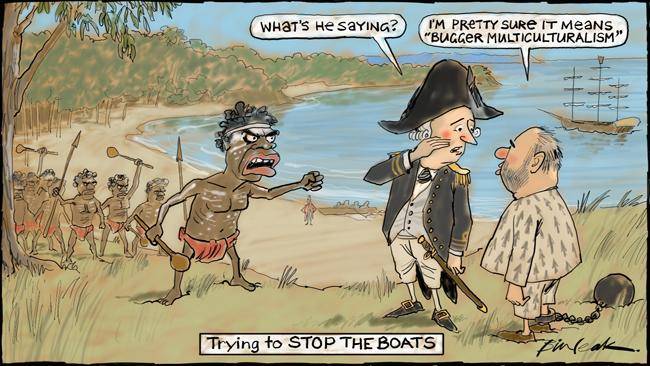
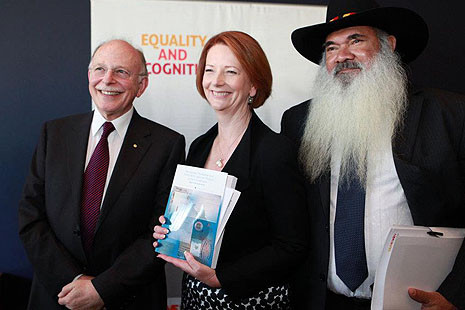
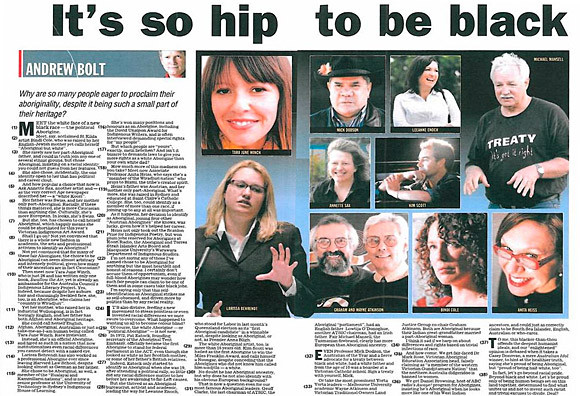

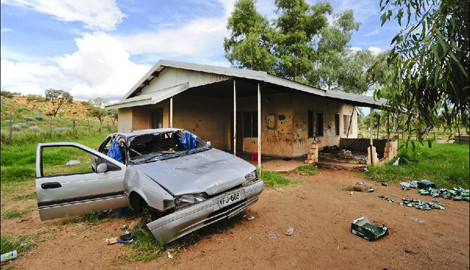




Comments are closed.